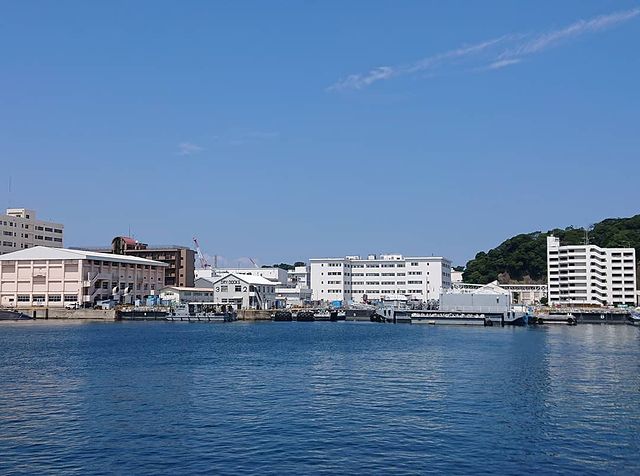| Anchorage Name | Location (Coordinates) | Area (km²) | Depth (m) | Bottom Type | Max Vessel DWT | Capacity | Primary Use | Restrictions & Safety Notes | Commercial Notes |
|---|---|---|---|---|---|---|---|---|---|
| Yokosuka Outer Anchorage | 35°17’30″N, 139°40’00″E | 1.2 | 15-20 | Mud/Sand | 50,000 | 5 vessels | Commercial/Naval standby | 1. Restricted during naval exercises (Japan MOD Notice 2023-5A) 2. Submarine cables marked at 35°17’15″N, 139°40’30″E (JP1121 Chart) 3. Mandatory AIS transmission 4. No anchoring within 0.5nm of 35°18’N, 139°39’E (US Navy zone) 5. Emergency drag radius: 0.3nm |
1. 72-hour advance notice to Port Authority (Yokosuka Port Regulation Art. 12) 2. No bunkering allowed 3. Maximum stay: 7 days without extension 4. Waste collection available (pre-arranged) |
| Yokosuka Inner Anchorage | 35°16’00″N, 139°39’30″E | 0.8 | 10-15 | Mud/Clay | 30,000 | 3 vessels | Commercial/Bunkering | 1. Currents up to 2.5 knots during spring tides 2. Prohibited for: – Vessels >200m LOA – LNG carriers 3. Night anchoring requires permission 4. Holding ground quality factor: 1.8 (Lloyd’s Register data) 5. Tidal range: 1.5m (mean) |
1. Bunkering requires: – Pre-approved contractors – Oil spill contingency plan 2. Fresh water available (48hr notice) 3. Ship chandlers available within 6hr notice 4. Customs clearance possible at anchor |
| Kurihama Anchorage | 35°13’45″N, 139°42’15″E | 1.5 | 12-18 | Sand/Shell | 80,000 | 8 vessels | Bulk carriers/VLCC standby | 1. Winter NW winds (Dec-Feb) may exceed 25 knots 2. Emergency drag zone marked at 35°13’30″N 3. Mandatory anchor watch 4. Swell may reach 2m during typhoon season 5. Underwater pipeline crossing at 35°13’50″N (marked) |
1. VLCCs must use: – Minimum 4 shackles scope – Standby tug during cargo ops 2. No waste discharge permitted 3. Bunker surveyors available 24/7 4. Nearest ship repair: Yokohama (18nm) |
| Uraga Suido Anchorage | 35°14’20″N, 139°43’40″E | 2.0 | 20-25 | Hard Clay | 150,000 | 10 vessels | VLCC/Capesize | 1. Traffic separation scheme applies 2. Prohibited anchoring within 500m of fairway 3. Depth variations ±1m during neap tides 4. Strongest current: 3.2 knots (spring tide) 5. Radar shadow area from 35°14’30″N to 35°14’50″N |
1. Pilot boarding area at 35°14’50″N 2. Bunker barges available 24/7 3. Freshwater supply capacity: 500t/hr 4. Nearest hospital: Yokosuka (marine ambulance available) |
| Sarushima Emergency Anchorage | 35°15’10″N, 139°37’20″E | 0.5 | 8-12 | Rock/Sand | 15,000 | 2 vessels | Emergency use only | 1. Permission required from JCG Yokosuka 2. No services available 3. Poor holding ground 4. Daytime use only 5. Maximum stay: 12 hours |
1. No commercial operations permitted 2. Medical evacuation possible via helicopter |
1. Navigation Regulations:
– Speed limit: 10 knots within 3nm of anchorage areas (Japan Coast Guard Ordinance 15-3)
– Compulsory reporting points:
* 35°20’N, 139°38’E (JCG Yokosuka Radio)
* 35°12’N, 139°45’E (Tokyo Wan VTS)
– Radar surveillance coverage: 24/7 within 20nm radius
– Mandatory equipment:
* VHF Channels 12/16 (monitored)
* Operational AIS Class A
2. Emergency Protocols:
– Immediate reporting required for:
* Anchor dragging >0.5nm
* Fuel leaks >100 liters
* Any contact with underwater cables
– Designated storm shelters:
* 35°15’10″N, 139°41’20″E (NE monsoon)
* 35°13’50″N, 139°40’10″E (SW monsoon)
– Emergency contacts:
* JCG Yokosuka: +81-46-822-0110 (Official)
* Port Authority Emergency: +81-46-822-9111
3. Meteorological Information:
– Prevailing winds:
* Summer (May-Sep): S/SE 10-15 knots
* Winter (Oct-Apr): N/NW 15-25 knots
– Typhoon season precautions:
* Mandatory evacuation when Signal No. 8 issued
* Designated typhoon moorings available
– Visibility:
* Average: 10-15nm
* Fog occurrence: 15 days/year (mainly Feb-Mar)
Warning Notices:
– Military exercise zones may extend without notice (MONITOR VHF Ch 16)
– Last chart correction: NM 245/2024 (15 May 2024)
– New underwater cable installation planned Q3 2024 (Notice No. YPA-2024-18)





